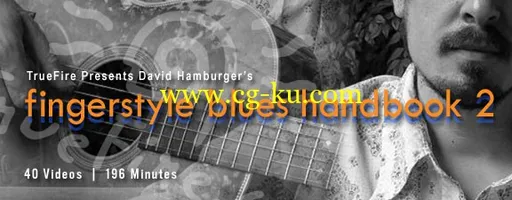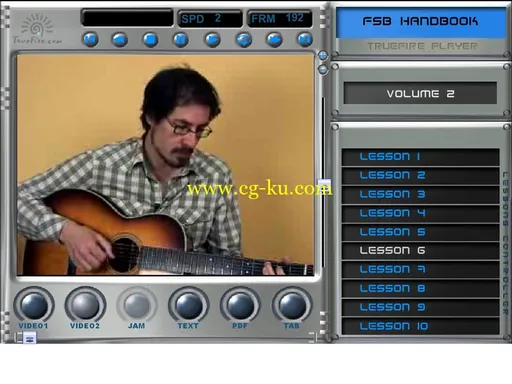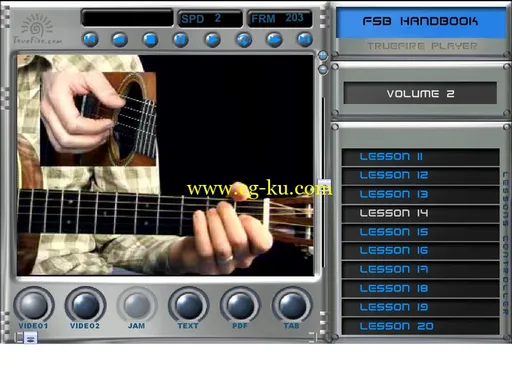
Truefire - Fingerstyle Blues Handbook Vol. 2 (2010)
Publisher: Truefire | Language: English
Video: SWF, data-dvd, 320x240 (4:3), 1181 Kbps, 29,0 fps | 1,50 Gb
Audio: MP3, 128 Kbps, 44100 Khz, 2 channels | Length: 03h 16min
Fingerstyle Blues Handbook 2 shows you how to achieve the finger and thumb independence to go far beyond basic "pattern picking" so that you can set up a groove and play melodies, blues licks and chord fills over an alternating thumb bass. You'll learn how to keep your thumb going like clockwork while incorporating hammer-ons and pull-offs, ragtime-style syncopations and chord rolls into a variety of eight, twelve and sixteen bar blues in the keys of E, A, D, C, A minor and E minor. Each of the twenty lessons features a new fingerstyle blues tune that you learn and add to your repertoire.


David HamburgerIdeal for lifelong flatpickers, and the perfect companion course for David's Handbook 1, Fingerstyle Blues Handbook 2 provides a solid foundation and repertoire for playing solo fingerstyle blues guitar. Graduates of both 1 and 2 will be well prepared to take on Hamburger's more advanced New School Fingerstyle Blues course, also from TrueFire.
Fingerstyle Blues Handbook 2 features 40 video lessons, text overviews, notation, interactive Power Tab and is presented in TrueFire's multi-media video player for Windows and Mac, featuring zoom, frame advance, looping and other useful tools.
Here's how Fingerstyle Blues Handbook 2 is presented...
The course is presented across twenty progressive lessons, starting with a foundation of basic moves and then adding on building new techniques and skills.
Hamburger overviews each new technique and move with tips and exercises for nailing the skill before taking on the lesson's arrangement.
Hamburger then performs a solo fingerstyle blues arrangement using only the techniques and moves covered in the lesson.
All twenty solo fingerstyle arrangements are broken down note-by-note, move-by-move along with tips for nailing the arrangement.
With the included Power Tab, students can "see" and "hear" the notation played out. Tempo can be adjusted without changing pitch and any section can be looped.